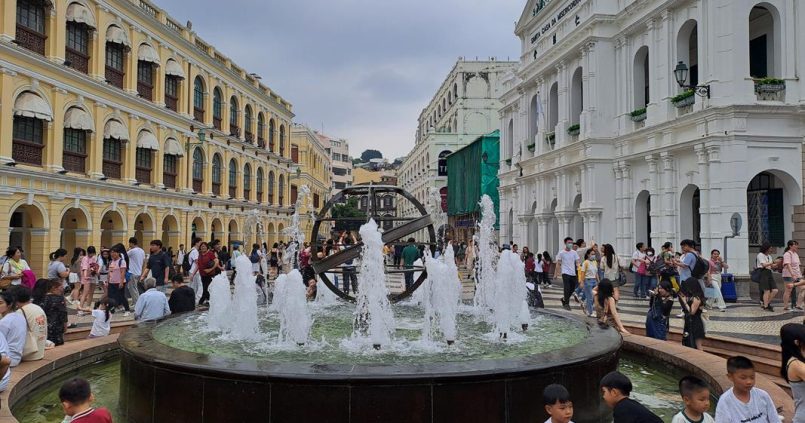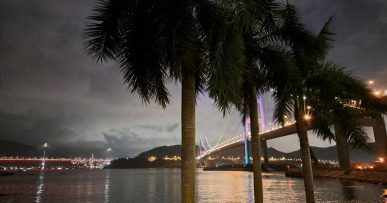Portuguese traders first arrived in Macau in 1513, and it soon became the leading center for trade between China and Japan. Portugal declared it an overseas province in 1951; however, in 1999, Portugal returned it to China as another special administrative region. The Historic Centre of Macau is now also a World Heritage site.
Macau Tower Observation Deck

Discover an unparalleled view of Macau from an exceptional vantage point elevated 223 meters above ground level. The Observation Deck, featuring three-story glass windows, provides an unparalleled 360-degree panoramic city view. The air-conditioned level is on floor 58, and the outdoor level is on floor 61. You can also purchase tickets to the world’s longest bungy jump and a scary, secure outdoor walk. The attraction closes at 7 p.m. on weekdays and 8 p.m. on weekends. Tickets cost MOP$198 for adults and MOP$128 for children.
Nam Van Lake

Located in the center of Macau, it is a great spot to sit, relax, and admire the views, especially at night. Views include the Grand Lisboa Hotel, the Casino Lisboa, Yoho Treasure Island Resorts World, the Wynn Casino, the Hotel Wynn, the MGM Hotel, and the Mandarin Oriental Hotel. If you are looking for a nice walk, this is your place.
A-Ma Temple

A-Ma Temple, nestled on the southeastern tip of the Macau Peninsula, is a serene oasis steeped in rich history and cultural significance. Believed to be one of the oldest Taoist temples in Macau, it is dedicated to the sea goddess Mazu, whom fishermen and sailors have revered for centuries. The temple’s intricate architecture, adorned with colorful motifs and elaborate sculptures, creates a mesmerizing ambiance, inviting visitors to delve into Macau’s spiritual heritage and soak in the tranquility amidst the bustling cityscape.
Moorish Barracks
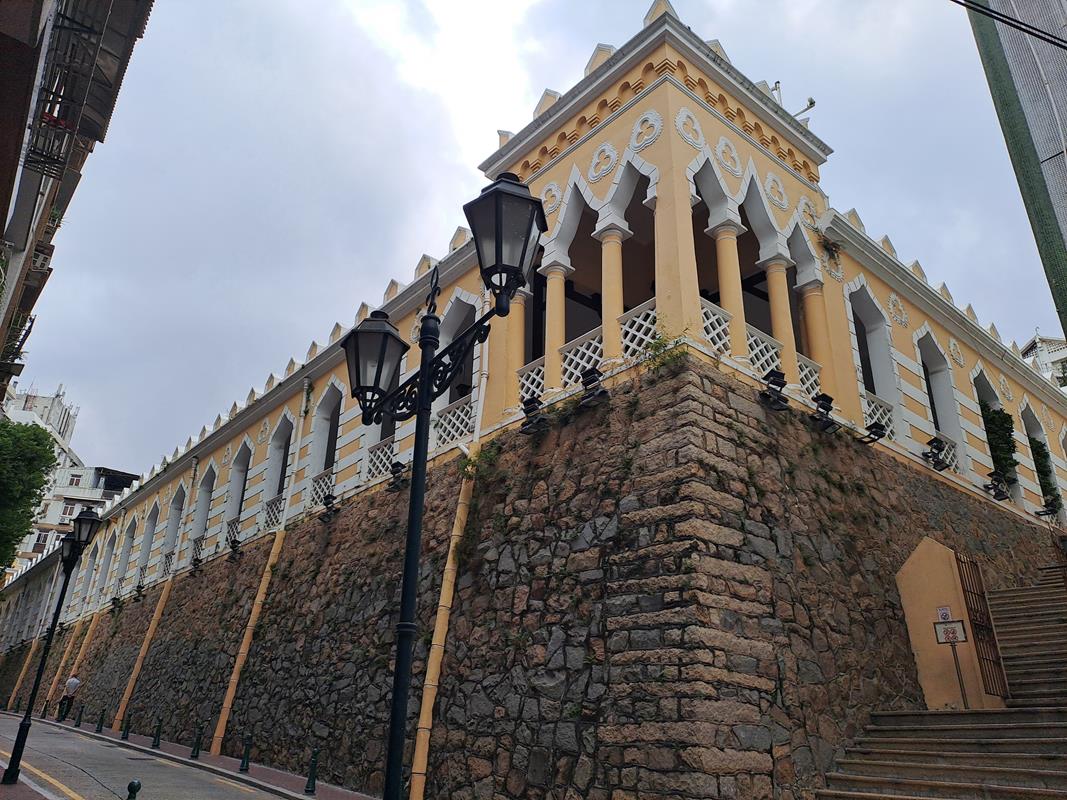
The Moorish Barracks in Macau, initially constructed in 1874, is a striking testament to the city’s rich multicultural history. Italian architect Cassuto designed these distinctive yellow buildings with Moorish-inspired architectural elements, which served as quarters for Indian police officers during Portuguese colonial rule. Today, they symbolize the fusion of Eastern and Western influences that define Macau’s unique identity, attracting visitors with their picturesque charm and historical significance.
Lilau Square
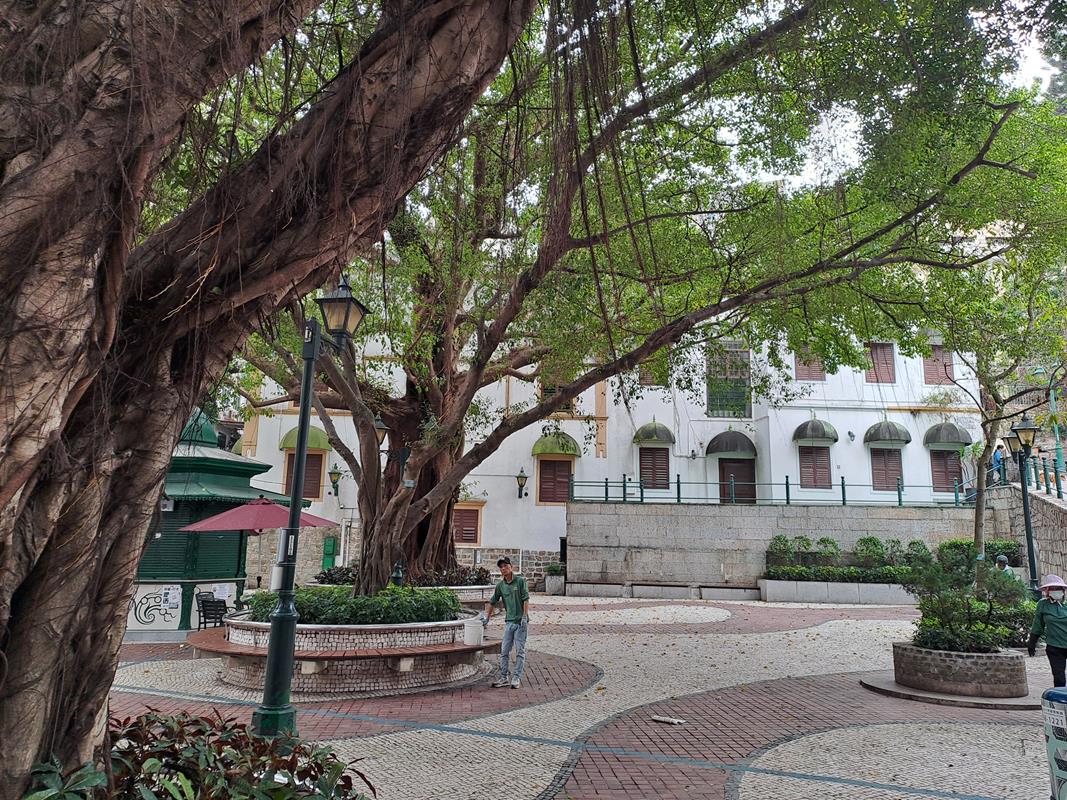
Lilau Square, located in the heart of Macau’s historic district, is a tranquil oasis steeped in colonial charm and cultural significance. Surrounded by pastel-colored colonial buildings and shaded by lush trees, the square exudes a timeless elegance. Its name, “mountain of the mouth,” reflects its historical role as the primary source of freshwater for early settlers. Today, Lilau Square remains a picturesque retreat where locals and visitors gather to appreciate its beauty and historical significance, making it a must-visit destination for those exploring Macau’s rich heritage.
Mandarin’s House
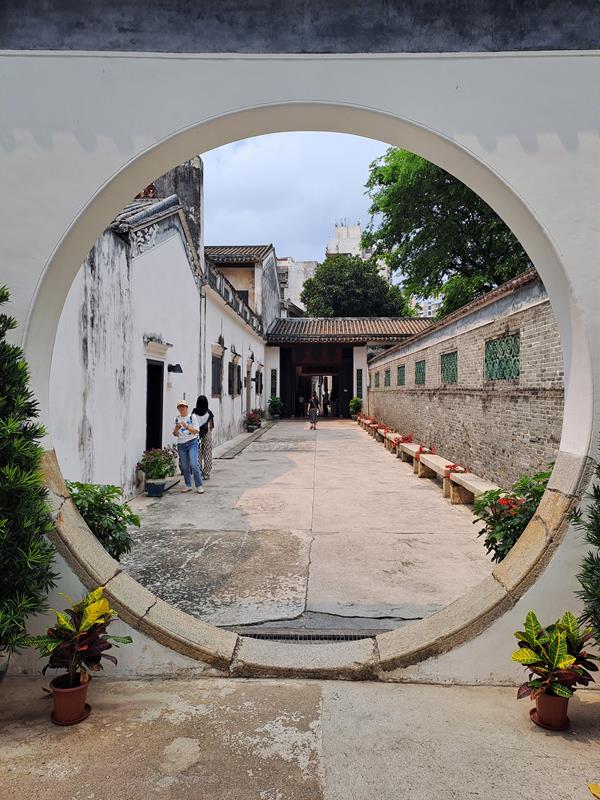
Mandarin’s House in Macau is a testament to the region’s rich cultural heritage, reflecting the elegant blend of traditional Chinese and Western architectural styles. Constructed in the late 19th century, this meticulously preserved residence offers visitors a glimpse into the opulent lifestyle of a prominent Mandarin family during the Qing Dynasty. With its intricate wooden carvings, tranquil gardens, and harmonious layout, Mandarin’s House symbolizes Macau’s historical significance and cultural diversity, inviting guests to immerse themselves in its captivating ambiance and storied past.
St. Lawrence Church
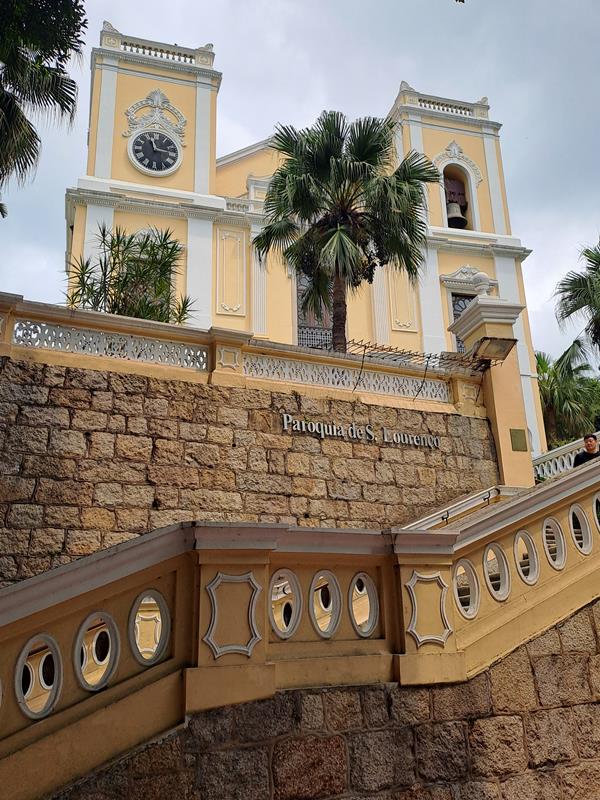
St. Lawrence Church, found in the heart of Macau’s historic center, is a testament to the city’s rich cultural heritage. Built in the 16th century by Jesuit missionaries, its elegant facade, adorned with intricate carvings and a striking bell tower, mesmerizes visitors with its Baroque beauty. As one of the oldest churches in Macau, St. Lawrence Church serves as a place of worship and a cherished landmark, inviting travelers to delve into this vibrant city’s fascinating history and spiritual essence.
St. Augustine’s Square
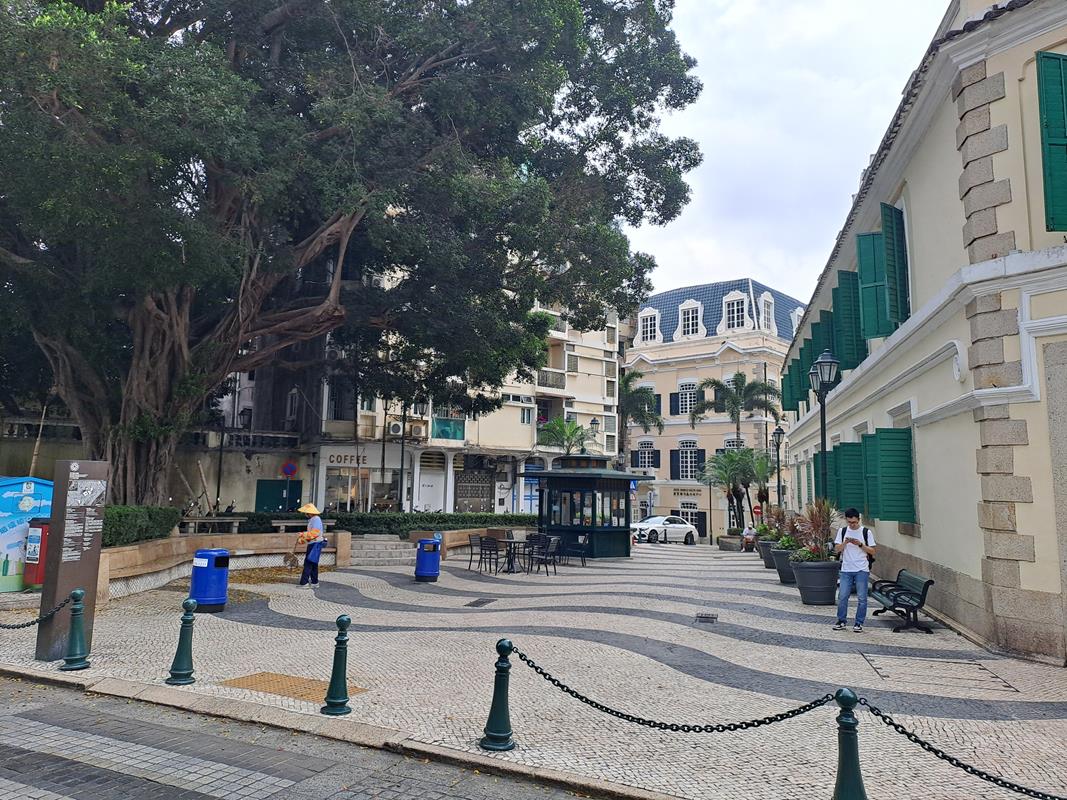
St. Augustine’s Square, nestled in the heart of Macau’s historic center, is a captivating blend of Portuguese colonial charm and Chinese heritage. Cobblestone streets wind past pastel-colored colonial buildings adorned with intricate balconies while incense wafts from nearby temples. The centerpiece is the striking St. Augustine’s Church (see below), a UNESCO World Heritage Site with an elegant facade and ornate interior. Visitors can immerse themselves in the square’s vibrant atmosphere, exploring quaint shops, savoring local delicacies, and soaking in the rich cultural tapestry that defines Macau.
Pom. Pedro V Theatre
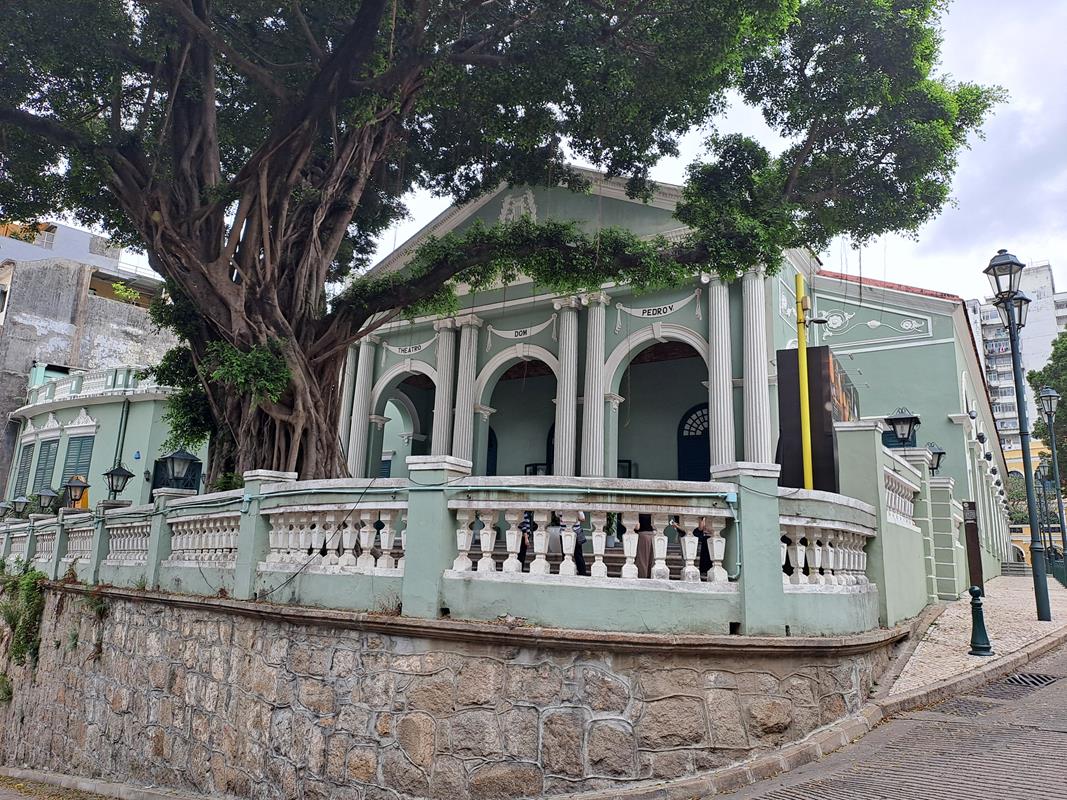
The Pom. Pedro V Theatre in Macau is a historical gem, a cultural cornerstone in the city’s heart. With its graceful neoclassical architecture dating back to the 19th century, it exudes an air of timeless elegance. Hosting many captivating performances, from traditional Chinese operas to contemporary plays, the theater continues to enchant audiences, weaving past and present in a tapestry of artistic excellence.
St. Augustine’s Church

St. Augustine’s Church, located in the historic city center of Macau, is a tribute to the city’s rich cultural heritage and religious significance. Built by Spanish Augustinian friars in the 16th century, its distinctive facade of intricate stone carvings and majestic columns reflects a harmonious blend of Baroque and Asian architectural styles. A symbol of resilience, the church has weathered centuries of history, surviving fires, typhoons, and wars. Today, it continues to be a cherished landmark, drawing visitors worldwide to admire its beauty and explore its storied past.
Sir Robert Ho Tung Library

Sir Robert Ho Tung Library in Macau represents cultural heritage and architectural splendor. Originally the residence of wealthy businessman and philanthropist Sir Robert Ho Tung, the building was later converted into a public library, enriching the community with its vast literature and historical archives. Its elegant colonial-style architecture, adorned with intricate details, invites visitors to immerse themselves in a world of knowledge and tranquility amidst the bustling streets of Macau.
Senado Square

Senado Square in Macau is a captivating blend of Portuguese colonial charm and vibrant Asian energy. Encircled by pastel-hued neo-classical buildings adorned with intricate detailing, this UNESCO World Heritage Site exudes a timeless allure. Cobblestone streets lead visitors through a bustling marketplace filled with local delicacies, traditional shops, and lively street performances, offering a sensory journey through Macau’s rich cultural tapestry. As the heart of the historic center, Senado Square remains a beloved gathering place where history, culture, and modern life seamlessly converge.
Ruins of St. Paul’s

The Ruins of St. Paul’s in Macau are an iconic testament to the city’s rich history and cultural fusion. Once part of the Church of Mater Dei and St. Paul’s College, these majestic ruins are all that remain after a fire ravaged the complex in the 19th century. Today, the intricate facade, adorned with elaborate carvings and sculptures, serves as a poignant symbol of Macau’s Portuguese heritage and its status as a UNESCO World Heritage Site, drawing visitors from around the globe to marvel at its beauty and explore the surrounding historic district.
Na Tcha Temple
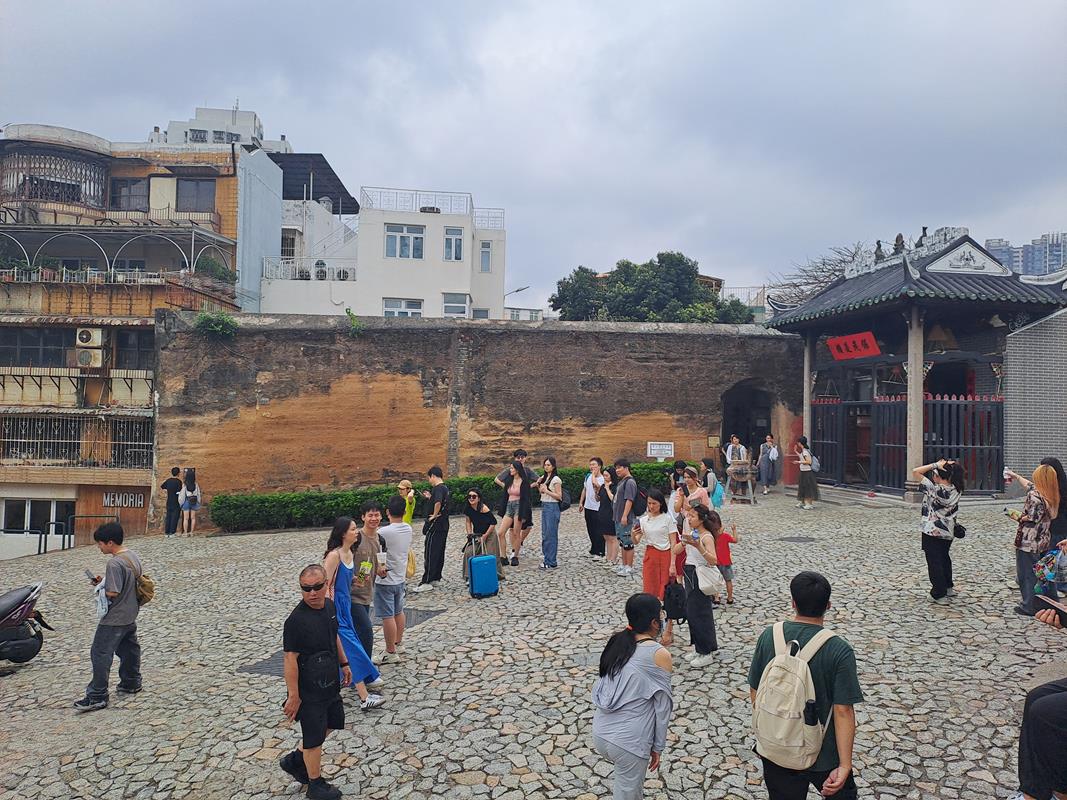
Na Tcha Temple, nestled amidst the vibrant streets of Macau, is a serene haven steeped in history and spirituality. Dedicated to Na Tcha, the Taoist deity of protection, this ancient temple exudes an aura of tranquility with its traditional Chinese architecture adorned with intricate carvings and vibrant reds. Amidst the bustle of modern Macau, Na Tcha Temple stands as a reminder of the city’s rich cultural heritage and offers visitors a moment of reflection and reverence amidst its sacred surroundings.
Old City Walls of Macau
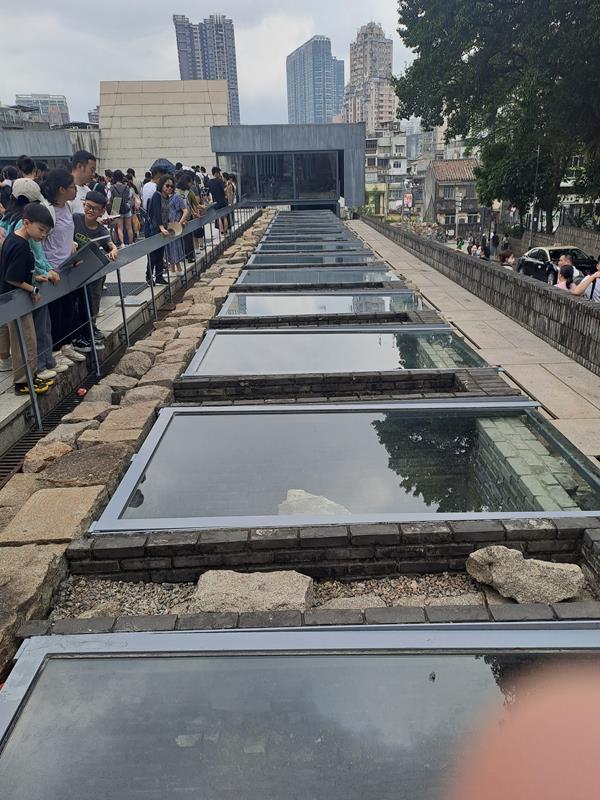
The Old City Walls of Macau, a testament to the city’s rich history, stand as enduring guardians of its past. Built-in the 16th century by the Portuguese, these sturdy fortifications encircle the historic center, once serving as a vital defense against invaders and pirates. Today, they offer visitors a glimpse into Macau’s colonial past, with well-preserved sections inviting exploration and reflection on the city’s cultural heritage and strategic significance.
Mount Fortress
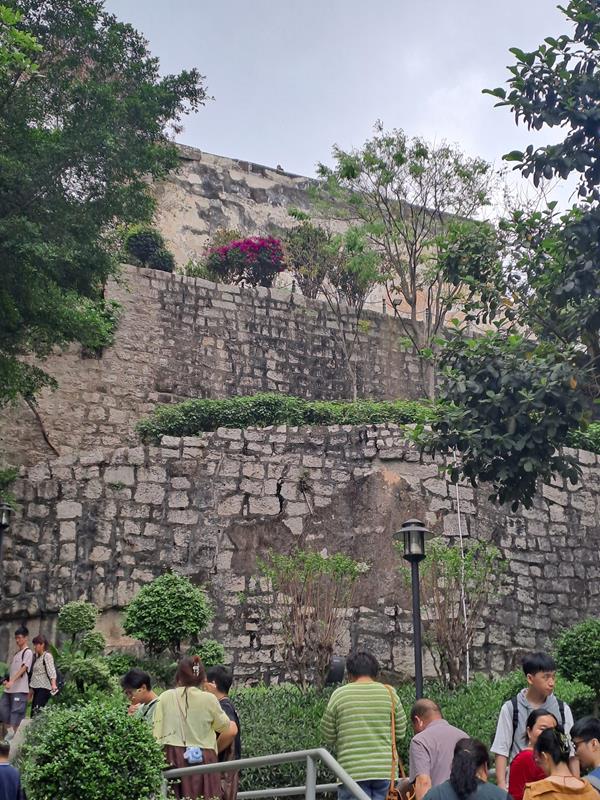
Mount Fortress, situated in the heart of Macau, is a silent witness to the city’s rich history and resilience. Built-in the 17th century by the Jesuits, this imposing stone structure served as a bastion against invasions, embodying Macau’s strategic significance. Today, amidst its weathered walls and cannons, Mount Fortress offers visitors a serene escape, providing panoramic views of the vibrant city below while preserving the echoes of its storied past.
Casa Garden
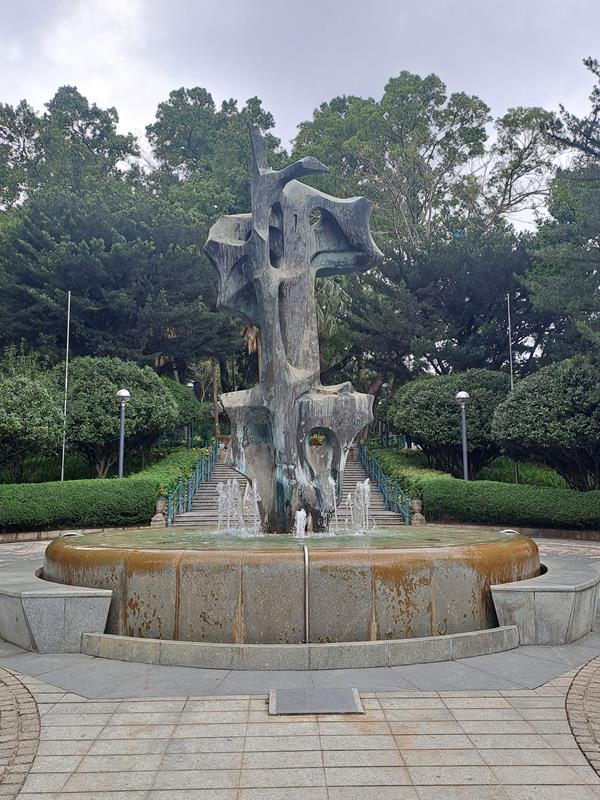
Casa Garden, located in the heart of Macau, exudes a colonial charm and historical significance. Initially built in the 18th century as the residence of a Portuguese merchant, it later served as the home of the East India Company’s chief representative. Today, this meticulously preserved heritage building is a testament to Macau’s rich cultural tapestry, housing the Macau House for Portuguese Speaking Countries. Its serene garden, adorned with lush greenery and tranquil pathways, offers a peaceful escape from the bustling streets, inviting visitors to immerse themselves in the city’s captivating history and multicultural heritage.

